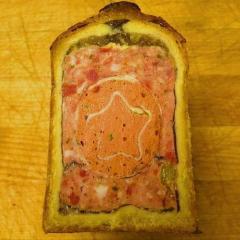16 hours ago, gfweb said:But the fat is unrendered. Are we talking about different things...canadian vs american bacon?
I am not sure what the experiment is, but hard fat (back fat) will not render at 140F. Soft fat (leaf lard) will. And a thin slice of bacon acts much differently than a full slab of whole belly.
When shoulders are smoked for a very long time on the cusp of 180F, much of the hard fat is still there, albeit it very tender.
Thinly sliced hard fat will render at higher temp, like in a 350F over or hot frying pan.
Crisped bacon (because slab bacon is, for the most part, already cooked) has much less water than the un-crisped/un-rendered slice and consequently will last a very long time in the fridge. The USDA recs are paranoid fantasies meant to insulate themselves from worst case scenarios since the US food system (poultry in particular) puts the safety onus on the consumer. I coarsely grind up bacon ends, render them stove-top, strain them, crisp them in a very low oven overnight and the bacon bits last for months in the fridge.
Bacon has lots of salt and nitrates specifically meant to increase the shelf-life.
The "uncured" Niman Ranch bacon most definitely has nitrates in the form of celery powder (which has more ppm than the conventional Prague #2 cure) but because celery powder has varying levels of nitrite and has to be used in such minuscule quantities, the USDA does not recognize it as a curing agent and forbids the "cured" distinction, even though it certainly is. Its all marketing malarkey.




